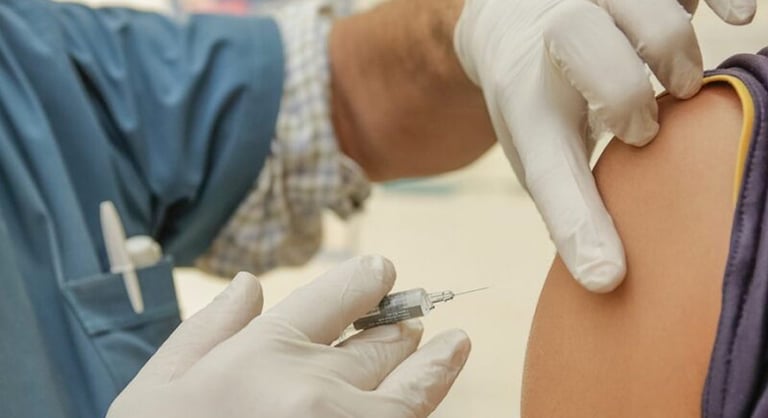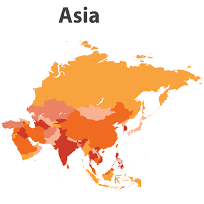AstraZeneca (LON:AZN) has presented detailed results from the positive Phase III TULIP 2 trial for anifrolumab, a potential new medicine for the treatment of moderate to severe systemic lupus erythematosus (SLE), which demonstrated superiority across multiple efficacy endpoints versus placebo, with both arms receiving standard of care.
On the primary endpoint, anifrolumab achieved a statistically significant and clinically meaningful reduction in disease activity at week 52, with 47.8% of patients receiving anifrolumab responding compared with 31.5% of patients on placebo, as measured by the British Isles Lupus Assessment Group-based Composite Lupus Assessment (BICLA) composite measure.1 The positive BICLA result in TULIP 2 is consistent with results from pre-specified analyses using the BICLA endpoint in the Phase III TULIP 12,3 and the Phase II MUSE trials.4
The TULIP 2 trial also showed statistically significant differences in multiple secondary endpoints.1 51.5% of anifrolumab patients receiving oral corticosteroids (OCS) greater than or equal to 10mg achieved a sustained reduction in OCS use compared with 30.2% of patients on placebo. Additionally, 49% of patients receiving anifrolumab with moderate to severe skin disease experienced improved skin manifestations at week 12, the pre-specified timepoint, compared with 25% of patients receiving placebo. Skin manifestations were measured by the Cutaneous Lupus Erythematosus Disease Area and Severity Index (CLASI).
Mene Pangalos, Executive Vice President, BioPharmaceuticals R&D, said: “There has only been one new medicine approved for systemic lupus erythematosus in the last 60 years, which is why we are so excited to see the positive TULIP 2 results. There is now a strong body of evidence demonstrating the benefit of anifrolumab, and we look forward to bringing this potential new medicine to patients with systemic lupus erythematosus as soon as possible.”
Professor Eric F. Morand, Monash University, Australia, and Principal Investigator on the TULIP 2 trial, said: “Systemic lupus erythematosus is often difficult to treat, and innovative new therapies are urgently needed. The TULIP 2 results demonstrated that, by targeting the type I interferon receptor, anifrolumab reduces overall disease activity, reduces corticosteroid use and improves skin manifestations.”
Dr. Richard Furie, Chief of the Division of Rheumatology at Northwell Health, New York, US, and Principal Investigator on the TULIP 1 trial and the Phase II MUSE trial, said: “The results across the MUSE and TULIP trials are very important because they support anifrolumab’s potential to address systemic lupus erythematosus, an often devastating disease that can impact almost any organ and even lead to long-term organ damage and death.”
The TULIP data are being presented at the American College of Rheumatology (ACR) Annual Meeting 2019 in Atlanta, US. The TULIP 1 data were also published simultaneously in The Lancet Rheumatology.
As previously disclosed, TULIP 1 did not meet its primary endpoint based on the SLE Responder Index 4 (SRI4) composite measure. However, analyses of secondary endpoints show efficacy consistent with TULIP 2 on BICLA response, reduction in OCS use, and improvement in skin disease activity.2,3
The safety and tolerability findings in TULIP 1 and TULIP 2 were consistent with the known profile of anifrolumab.1,2,3 There were more commonly reported cases of herpes zoster in patients on anifrolumab (TULIP 1: 5.6% vs.1.6%, TULIP 2: 7.2% vs.1.1%). Most cases were mild to moderate in severity and all were cutaneous and resolved with antiviral treatment.
About anifrolumab
Anifrolumab is a fully human monoclonal antibody that binds to subunit 1 of the type I interferon receptor, blocking the activity of all type I interferons including IFN-alpha, IFN-beta and IFN-omega.4 Type I interferons are cytokines involved in the inflammatory pathways.5 Between 60% and 80% of adults with SLE have an increased type I interferon gene signature, which has been shown to correlate with disease activity.5,6
AstraZeneca acquired global rights to anifrolumab through an exclusive license and collaboration agreement with Medarex, Inc. in 2004. Medarex was acquired by Bristol-Myers Squibb in 2009.
About TULIP
The pivotal TULIP (Treatment of Uncontrolled Lupus via the Interferon Pathway) programme includes two Phase III clinical trials, TULIP 1 and TULIP 2, that evaluated the efficacy and safety of anifrolumab versus placebo in patients with moderately to severely active autoantibody-positive SLE who are receiving standard of care treatment.
TULIP 1 randomised 457 eligible patients (1:2:2) to receive a fixed-dose intravenous infusion of 150mg anifrolumab, 300mg anifrolumab, or placebo every four weeks. TULIP 1 assessed the effect of anifrolumab in reducing disease activity as measured by the SRI4.
TULIP 2 randomised 365 eligible patients (1:1) to receive a fixed-dose intravenous infusion of 300mg anifrolumab or placebo every four weeks. TULIP 2 assessed the effect of anifrolumab in reducing disease activity as measured by the BICLA.
The SRI4 and the BICLA are both validated composite measures of SLE disease activity, which have been used as primary endpoints in Phase III lupus trials.7 Each contain the same disease activity assessment tools, British Isles Lupus Assessment Group (BILAG) index and Systemic Lupus Erythematosus Disease Activity Index 2000 (SLEDAI-2K), but utilise different scoring systems.7 The BICLA requires improvement in all organs with disease activity from baseline, with no new flares. It can capture clinically meaningful partial improvements within an organ system. The SRI4 requires complete resolution in a single ‘higher weight’ lupus symptom or complete resolution in multiple ‘lower weight’ lupus symptoms, with no new flares. It does not require improvement across all affected organ systems.
In addition to the pivotal Phase III TULIP programme, anifrolumab is being evaluated in a Phase III long-term extension trial in SLE and a Phase II trial in lupus nephritis.
About SLE
Systemic lupus erythematosus (SLE) is an autoimmune disease in which the immune system attacks healthy tissue in the body.8 It is a chronic and complex disease with a variety of clinical manifestations that can impact many organs and can cause a range of symptoms including pain, rashes, fatigue, swelling in joints, and fevers.9 It is associated with a greater risk of death from causes such as infection and cardiovascular disease.10 There has been only one new medicine approved for SLE in the last 60 years.11
About AstraZeneca
AstraZeneca is a global, science-led biopharmaceutical company that focuses on the discovery, development and commercialisation of prescription medicines, primarily for the treatment of diseases in three therapy areas – Oncology, Cardiovascular, Renal and Metabolism, and Respiratory. AstraZeneca operates in over 100 countries and its innovative medicines are used by millions of patients worldwide. Please visit astrazeneca.com and follow the Company on Twitter @AstraZeneca.












































